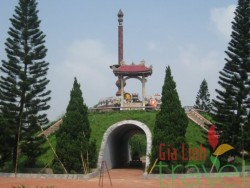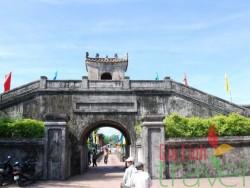Quang Tri
Quang Tri and the Demilitarized Zone (DMZ)


Quang Tri

Quang Tri
In 1954, Ho Chi Minh’s government within the north and the French colonial administration within the south agreed an armistice that concerned a ‘temporary’ partition of Vietnam. The Ben Hai River, in the extreme north of Quang Tri province, turned the arbitrary line dividing the 2 halves of the country. When the southern ‘government’, backed by the US, reneged on the national elections promised within the settlement, Quang Tri turned the theatre the place a lot of the vital scenes of the Vietnam Battle were staged.
From then until the early seventies when the Vietnamese army overwhelmed the defenses alongside the southern edge of the (DMZ), Quang Tri was a battlefield, one of the intensively bombed areas in army history. It left a barren desert created by hundreds of 1000’s of tons of high explosive, estimated to be the equivalent of seven Hiroshima atom bombs, as well as napalm, phosphorous and herbicide.
Right this moment, nature has reclaimed a lot of the land; however craters are visible nearly in all places within the area.
It has been estimated that almost a 3rd of the ordnance didn’t explode. Clearance is steady, but there are still enough reside landmines, bombs and shells to add to the tens of thousands of children and adults killed or maimed by unexploded ordnance since 1975. The numbers are dropping; however incidents of death or harm amongst local people are reported almost each week.
Accidents have an effect on children strolling to and from faculty or the market who mistake grenades for toys, farmers ploughing or planting crops, building workers digging wells or laying foundations, and poor peasants trying to dismantle a bomb or shell to promote the scrap metallic for a small quantity of cash.
The principle sites and paths at the moment are freed from danger, but venturing off the crushed track is unwise unless you’re accompanied by a professional guide.
If you happen to travel with Gia Linh Travel, you’ll have an expert local guide who is not going to only have intimate knowledge of the area, but will also keep you away from unsafe locations.
Other than war memorabilia, little remains of the pre-struggle towns and villages. Nevertheless, there is a couple places of interest past these instantly linked to the war.
Quang Tri town, once an important citadel town and the provincial capital, is usually an evocative ruin. There are a couple of remains of the citadel, built in 1824 by King Minh Mang, but not a lot else.
However, Dong Ha, the present provincial capital, has flourished. It has a large deepwater port, a direct path to Laos via the Lao Bao border gate 80kn to the west, and is more likely to be a vital hub on the planned trans-Asia highway. It has a decent hotel and is a good centre from which to discover the (DMZ) in depth.
Close to the Laos border, Huong Hoa is an unremarkable small town in the foothills of the Annamite Mountains. Previously often called Khe Sanh, it’s known for the coffee produced from plantations developed by the French. The interest for our guests is a German venture linking Kraft Foods Germany and the Dutch ‘Douwe Egberts’ coffee company with a Vietnamese Arabica coffee producer to develop high quality coffee with out exploiting the farmers or damaging the environment.
A sizable proportion of Huong Hoa’s population is poor Bru Van Kieu ethnic minority people – you’ll in all probability meet girls smoking long-stemmed pipes.
